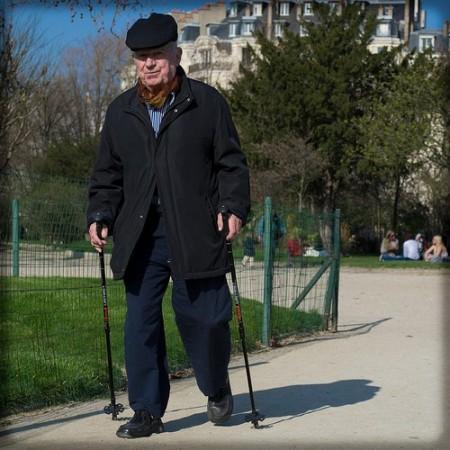
Going for regular walks can help reduce the risk of strokes. New research reported in the journal Stroke found that old-aged men who walked for two hours daily had a lower risk of getting strokes than those who walked less than 30 minutes a day.
The analysis included more than 3,400 men aged between 60 and 80, who had enrolled in the British Regional Heart Study.
In the beginning of the study, participants provided details about their walking habits, walking speed and the distance they covered every week. Based on the walking hours, the participants were divided into different groups, including non-walkers and those who walked for more than 22 hours a week. Nearly half the number of participants (42 percent) walked for more than eight hours weekly, while a minority (9 percent) spent more than 22 hours a week for walking.
The men underwent regular health check-up tests and other specific tests that measured factors which increased risk of strokes.
A follow-up of ten years showed the importance of walking in preventing strokes. Those who walk for at least eight to 14 hours a week had one-third lowered risk of stroke than those who walk for less than three hours a week. Men who reported less walking hours - zero to three or eight to 14 hours, had come across more episodes of strokes (80 and 55 strokes per 10,000 person years, respectively) than men who walked for more than 22 hours, weekly.
"Our findings suggest that regular walking each week could be an important part of stroke prevention strategies in older people," first author of the study, Dr Barbara Jefferis, from the University College London, UK, said in a statement.
Interestingly, the walking hours mattered more in preventing strokes than the walking speed. "The total time spent walking was more consistently protective against stroke than walking pace; overall it seemed that accumulating more time walking was most beneficial," Jefferis added.
The health benefits of regular walking, like stronger bones, better cardiovascular health and mood, are well known. According to health experts, increasing the walking speed after age 65 can help improve life expectancy. They also recommend hiking poles for old people to improve posture, cardiovascular health and avoid ankle fracture. Choosing the right shoes is also equally important. Thinner shoes with flexible soles are safer for old people than thick shoes with cushioned soles.













